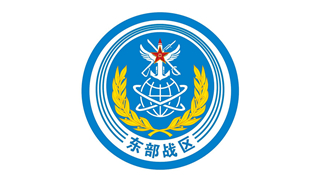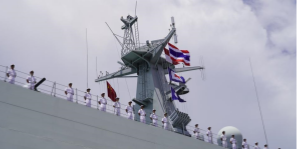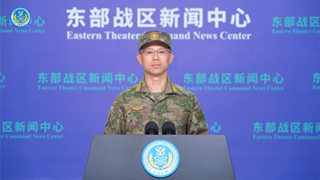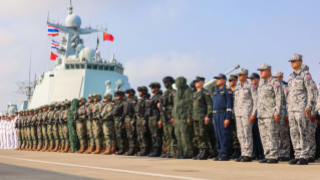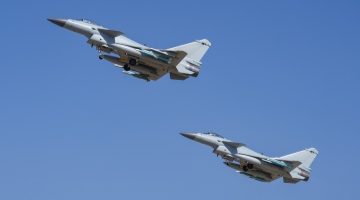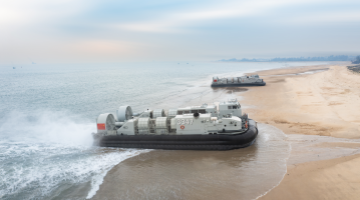By Wu Dahui
The recent third joint maritime patrol by Chinese and Russian naval vessels in the Pacific Ocean has put some Americans on tenterhooks.
The China-Russia joint patrol took place in international waters near Alaska, the spokesperson of US Northern Command said the patrol didn't pose any threat to the US or Canada, and the spokesperson of the Chinese embassy in the US reaffirmed that the patrol, as part of the annual cooperation plan between Chinese and Russian militaries, does not target any third party and has nothing to do with the current international and regional situation. Despite all these, the patrol has nonetheless touched the nerve of American media and political circle, which raved about the so-called "joint authoritarian threat" from Beijing and Moscow. Behind this hysteria and exasperation is America's double standards and hegemonistic mindset.
For one thing, the clamor within the US is aimed to tie China and Russia together.
It is known to all that the three important documents released by US DoD in 2022, namely the US National Defense Strategy, Nuclear Posture Review, and Missile Defense Review, went to great lengths to exaggerate the China and Russia threats, calling Moscow a grave threat to the US and China "the only country with both the intent to reshape the international order and, increasingly, the economic, diplomatic, military, and technological power to do it." America wants to tie China and Russia together as a group rival, and the current clamor within the country about Beijing and Moscow joining hands is aimed to create an excuse for its hegemonistic actions in the future.
For another, America has consistently ramped up regular, close-in reconnaissance of China and Russia.
The US military dispatched about 1,200 military aircraft on close-in reconnaissance in the South China Sea in 2021 alone. According to statistics of the South China Sea Strategic Situation Probing Initiative (SCSPI), such reconnaissance refreshed three records in November 2022 – the largest number of aircraft in a single month and in a single day, and the shortest reconnaissance distance. The practice has only increased in 2023. American military vessels have also frequently performed the so-called "freedom of navigation operation" in the South China Sea. All the five US Navy oceanographic survey ships are perennially stationed at the Yokohama base in Japan to monitor the undersea terrain, hydrological, underwater acoustic and ocean current situations in South China Sea waters and analyze the sailing pattern of Chinese submarines. American vessels and aircraft have maintained a constant presence in the region for many years, with barely any window period.
After the Russia-Ukraine conflict broke out, American military vessels and aircraft have maintained high-pressure close-in reconnaissance against Russia too, with its reconnaissance planes approaching the Crimean coastline at a critical distance in the airspace over the Black Sea and approaching Russia's air force base in Syria multiple times. American vessels and aircraft have conducted close-in reconnaissance against it over 840 times per year on average since 2008, claimed Moscow.
If the US and European countries can carry out the so-called "freedom of navigation operations" and close-in reconnaissance in the South China Sea and waters around Russia, why cannot China and Russia navigate freely in the open sea? Moreover, according to the US side, Chinese and Russian militaries have held at least 36 training and exercises of various types since 2014, but never once did they ever enter or pass the territorial land or sea of another country. They, as responsible major countries, are providing public good for world peace and stability.
The China-Russia relationship is based on the principle of non-alliance, non-confrontation, and non-targeting of any third party. Their joint maritime training, exercise and patrol are not to threaten any specific country, but to ensure the security of international sea routes and safeguard global and regional stability. It is the regular close-in reconnaissance by the US that's the biggest factor of instability in the South China Sea region. It is the US-led Western world's strategic goal of expanding NATO to encroach upon the Asian Pacific region, as revealed during the Vilnius Summit in July, that poses the greatest threat to regional security and stability.
(The author is deputy dean of the Russian Institute of Tsinghua University.)
Editor's note: Originally published on huanqiu.com, this article is translated from Chinese into English and edited by the China Military Online. The information and opinions in this article do not necessarily reflect the views of eng.chinamil.com.cn.

